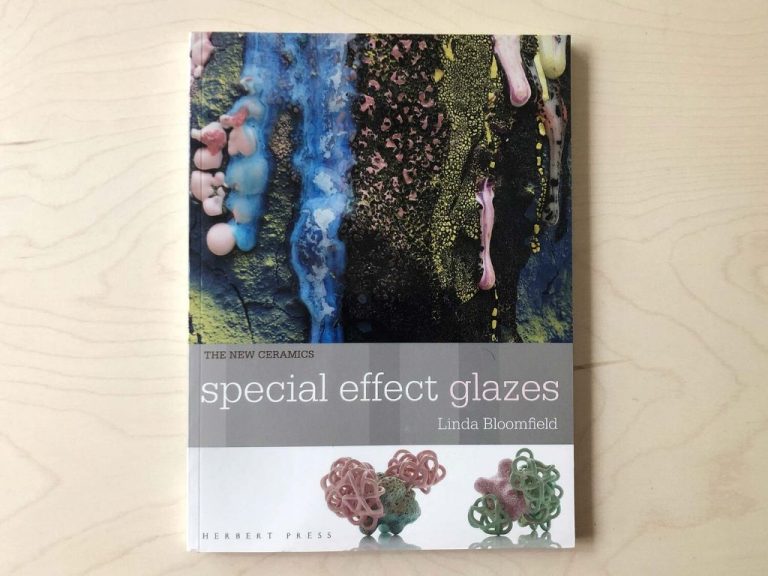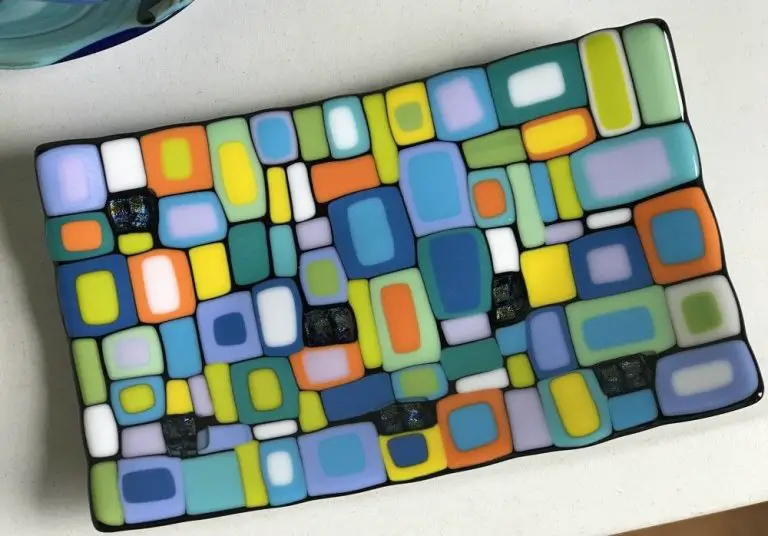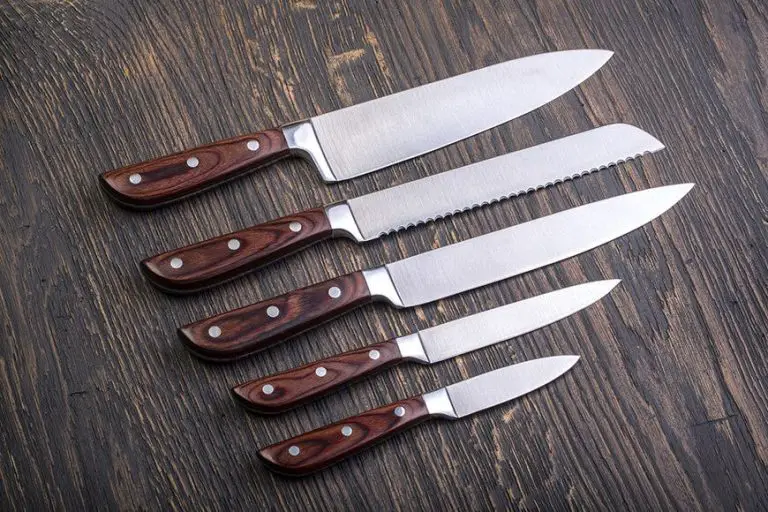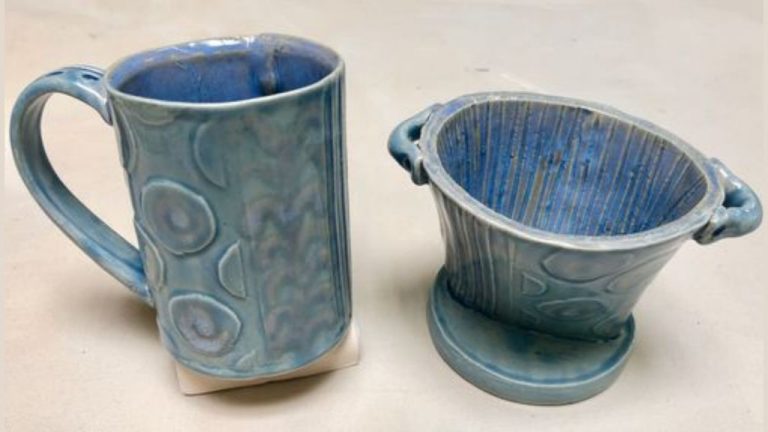Is Slip Just Clay And Water?
What is slip?
Slip is a mixture of clay and water that has a creamy, liquid consistency. It is used in several pottery techniques. The main difference between clay and slip is that slip has a lower clay content and higher water content, giving it a thinner, pourable consistency compared to regular clay.
While clay contains 25-40% water, slip contains around 50-70% water. The water allows the clay particles to flow smoothly. Slip has multiple important uses in pottery:
- It can be used to join pieces of clay together, acting like glue between pottery parts.
- It can be used to smooth pottery surfaces and hide seams.
- It can be used to create decorative effects like trailing and splattering.
- It can be used in slip casting to pour slip into molds.
So in summary, slip is a vital liquid clay mixture used in several pottery techniques. It differs from regular clay by containing more water, giving it a pourable consistency ideal for joining, smoothing, decorating, and slip casting.
Clay
Clay is an integral component of slip. It provides the plasticity and texture that allows slip to be molded and shaped. Clay consists of fine-grained minerals such as silica, alumina, and iron oxides that give it its unique properties.
There are several types of clay used in pottery:
- Earthenware clays – These fire at lower temperatures and are quite porous. They include red and brown clays.
- Stoneware clays – Denser and stronger than earthenware, these clays vitrify and become non-porous at high temperatures. They include grey, buff, and blue clays.
- Porcelain clays – Very white and translucent when fired, porcelain clays are more difficult to work with but can create delicate pottery.
Clay gives slip its plasticity which allows it to be shaped, molded, and cast into different forms. The clay particles bond with water to create a smooth, workable paste that holds its shape. Choosing the right clay is key for creating high quality pottery using the slip casting technique.
Water
Water is a crucial ingredient in slip. It is added to clay in order to make the clay particles suspend and flow smoothly. Water acts as a lubricant, allowing the clay particles to move over one another without catching.
The amount of water added to clay has significant effects on the properties and behavior of the resulting slip. Adding a small amount of water makes the clay stiff and thick. As more water is incorporated, the slip becomes thinner and more fluid. Too much water will make the slip runny and weak.
The ideal amount of water creates a smooth, creamy slip that pours easily but holds its shape when poured. The specific consistency depends on factors like the clay body, intended use, and preferences of the potter or studio. Finding the optimal amount of water for a clay’s purpose is an essential skill in working with slip.
Other ingredients
While slip consists mainly of clay and water, other additives are frequently added for specific purposes. Some common reasons for including other ingredients in slip are:
- To improve workability and plasticity
- To increase strength and durability
- To reduce shrinkage
- To alter color and texture
Some examples of additives used in slip include:
- Sodium silicate – increases strength and workability
- Calcium carbonate – reduces shrinkage
- Barium carbonate – improves translucency
- Colorants like metal oxides and stains – alter color
- Grog or chamotte – adds texture
The ingredients added to slip depend on the type of clay used and the desired characteristics of the finished piece. With the right combination of ingredients, slip can be optimized for techniques like slip casting, slip trailing, or for use as a decorative slip glaze.
Making Slip
The basic slip recipe calls for a mixture of clay and water. The typical ratio is about 1 part dry clay to 2-3 parts water by weight. The exact amount of water needed will vary depending on the type of clay used.
To mix up a batch of slip, start by measuring out the dry clay powder. Next, slowly add water while mixing continuously to avoid clumping. Use a blender, mixer, or whisk to thoroughly incorporate the water into the clay. Keep adding small amounts of water until a smooth, liquid consistency is achieved.
The finished slip should flow easily and have a creamy texture similar to heavy cream or melted ice cream. It should coat surfaces evenly when brushed or poured on. Test the slip on a vertical surface to check that it doesn’t immediately run or slump. The ideal viscosity allows the slip to hold its shape for a few moments before slowly starting to drip.
Getting the right consistency takes some trial and error. Be prepared to adjust by adding more clay or water as needed. Testing small batches first can help determine the perfect ratios for a specific clay body recipe.
Using Slip
Slip has many uses in pottery and ceramics. Here are some of the main ways slip is utilized:
Dip, Pour, and Paint
Slip can be thinned down and used to dip, pour, or paint ceramic pieces. Dipping wares in slip will provide an even coating before firing. Pouring slip into molds or over objects will cause it to adhere and take on that shape when dry. Painting slip onto bisque can serve decorative purposes or fill pores before glazing. A slip wash helps even out absorption.
Slip Trailing
Trailing slip involves pouring liquid slip from a slip trailer bottle to draw fine lines and designs. Slip trailing on leather-hard clay produces raised textures. On bisque or glazed surfaces, it creates inlaid designs as the areas around the trail become recessed during firing. Popular trailing slip decorations are vines, leaves, feathers, waves, spirals, dots, and fine lines.
Inlay Techniques
Slip inlay involves using contrasting colored slips to fill engravings, creating striking visual designs. To make slip inlays, leather-hard clay is carved, impressed with stamps, or engraved with lines and patterns. Contrasting slip is then pushed into the recesses before further drying and firing. The colored slip remains inset within the carved areas after firing. Inlay techniques allow for great artistic freedom.
Slip Glazes
One unique way to use slip is as a glaze for pottery. Rather than purchasing commercial glazes, potters can create their own colored slip to use as a glaze.
To make a slip glaze, simply add pigments like iron oxide or cobalt carbonate to standard slip until the desired color is achieved. Common colors for slip glazes include earth tones like tan, brown, and green.
Slip glazes are applied to pottery pieces using similar techniques as commercial glazes. The slip can be brushed or poured directly onto the bisque ware until the piece is fully covered. For additional texture, slip can be trailed on with a rubber tipped applicator or sponged on.
Firing the pottery to around cone 04-06 will fuse the colored slip to the clay body to form a glossy glaze finish. Since the slip glaze becomes one with the underlying clay, it is very durable and resistant to chipping and scratching.
Slip glazes allow full customization of colors and effects. They also adhere well to the pottery when fired. For potters aiming to use more natural materials, colored slip offers an attractive glazing alternative without any need for commercial glaze products.
Slip Casting
Slip casting is a ceramic forming technique that involves pouring liquid clay slip into a plaster mold. As the plaster absorbs water from the slip, a layer of clay builds up on the interior walls of the mold to form the desired shape. Once the clay shell reaches the right thickness, the excess slip is poured out of the mold.
Some key benefits of slip casting include:
- Ability to accurately and consistently reproduce complex shapes and designs
- Smooth surface finish of cast pieces
- Efficiency of producing multiple copies of the same object
- Versatility to create simple to intricate objects
Slip casting is commonly used to produce ceramic objects like sanitaryware, tableware, cookware, and decorative pieces. It allows efficient mass production of detailed wares with thin walls and consistent shapes. Some examples of slip cast items include porcelain plates, bowls, cups, vases, figurines, and plumbing fixtures.
History of Slip
The origins of slip can be traced back thousands of years to early pottery making. Archaeologists have found evidence of slip decoration on ancient pottery fragments from cultures all around the world including China, Greece, Rome, and Mesoamerica.
Slip has been used throughout history for both decorative and functional purposes. In ancient times, slip was often used to coat the interiors of vessels to make them less porous. Decorative slip techniques included using different colored clays to create patterns, textures, and designs on pottery. Some cultures also used slip to join pieces of pottery together.
Several famous examples highlight the historic use of slip in pottery. Chinese porcelain from the Song Dynasty features stunning cobalt blue decorations made from blue slip. Intricate red and black slip designs adorn ancient Mimbres pottery from the American Southwest. And the ancient Greeks used slip known as black-figure and red-figure techniques to paint figural scenes on their pottery.
Myths
There are some common misconceptions and myths about slip that deserve clarification. Here are some slip facts versus fiction:
Myth: Slip is just clay and water mixed together.
Fact: While slip consists mainly of clay and water, most ceramic slips contain other additives as well to modify viscosity, workability, and drying time.
Myth: All slips are created equal and interchangeable.
Fact: Not all ceramic slips are the same. The specific clay type, particle size, additives used, ratios, and more can vary greatly between slips for different purposes.
Myth: Slip is only used for decorating.
Fact: In addition to decorating, slips are used for purposes like slip trailing, slip painting, increasing impermeability, filling cracks, lubricating clay, and slip casting.
Myth: Slip casting is just pouring slip into a mold.
Fact: While pouring slip into a mold is part of slip casting, it involves multiple careful steps like draining excess slip, controlled drying, and firing to achieve the desired results.
By understanding the facts around ceramic slip, potters can utilize this versatile material more effectively in their work.





